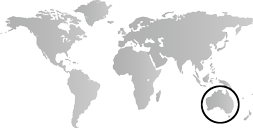Building upon the gradual realization of the artistic achievements of Australian Aboriginals that began in the late 1800s, the twentieth century witnesses the discovery and recognition of the vast depth and diversity of pre-European Aboriginal art as well as the development of a series of distinctive regional schools of contemporary Aboriginal painting and sculpture, including Western Desert acrylic painting, or “dot” painting.
In the first years of the century, Australian art is still dominated by the Impressionist landscape painting made popular by the Heidelberg School of the 1880s and 1890s. The Society of Artists in Melbourne and Sydney sponsors exhibitions filled with local landscape scenes. It is only in the years following World War I that the effect of international modernism begins to appear in Australian art. The 1930s mark the establishment of a number of institutions for the exhibition of new Australian art, both abstract and representational, including the Modern Art Centre in Sydney and the Contemporary Art Society in Melbourne. Toward the end of the decade, some contemporary landscape painters begin to adopt the formal devices and pictorial motifs of Aboriginal art, interpreting them through modernist eyes.
Throughout the 1940s and ’50s, tension mounts between the proponents of representational and nonrepresentational art. The conflict peaks in 1959–61, when figurative artists calling themselves the Antipodeans and the “Sydney 9” group of abstractionists square off in a series of provocative exhibitions. Abstract painting, however, continues to dominate the Australian art scene for the next decade. Artists such as Fred Williams (1927–1982), Ian Fairweather (1891–1974), and Janet Dawson (born 1935) draw upon the colors and forms of the Australian landscape for their abstract work, and in 1968 an exhibition titled The Field launches the careers of a new generation of artists practicing “color field” abstraction.
The decade of the 1970s sees a great deal of experimentation in media other than traditional forms of painting and sculpture, much of it informed by political activism and the women’s movement, which motivate artists to produce community-oriented, socially engaged work, including posters and protest banners. By the end of the decade and into the 1980s, painting regains its status as a major form of visual art in Australia with the development of Neo-Expressionism. Many painters also show an interest in incorporating references to Australian history and earlier Australian art into their own work. Bea Maddock (1934–2016), for example, creates works that unite the characteristics and themes of Aboriginal and modernist art, combining layers of landscape imagery and written language.
The latter decades of the century witness the growing recognition of contemporary Aboriginal painting as an important movement within twentieth-century art. The bark painting traditions of Arnhem Land, which had first come to the attention of Westerners nearly a century earlier, continue to flourish, while Western Desert painting continues to expand and evolve. At the same time, other regions such as the Kimberley and Queensland also begin to produce contemporary paintings in their own distinctive regional styles. In the major cities, artists from Australia’s urban Aboriginal communities also begin to create works in a variety of media and styles.


